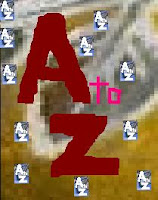Short notes on History of English
Literature
A Set of 26 Objective Questions & Answers
1. Carlyle
became lifelong friend of Emerson. Emerson became famous throughout the country
as “The Safe of Concord”. Emerson called his Journals as his “Savings Bank”. Emerson
was greatly influenced by Indian especially Hindi thought. What appeared most
to Emerson was the concept of the fundamental Atman – Brahman unity.
2. “The American Scholar” is an address delivered
at Harvard College in 1937. It has been called the nation’s intellectual
Declaration of independence. It was reprinted in London in 1844 under the title
“Man Thinking: An Oration”.
3. Leaves
of grass gives equal status to woman with man. It is usually spoken of as
Whiteman’s poetic autobiography. Vivekananda called Whitman “The Sanyasin of
America”. Emerson had seen the Leaves of Grass as a combination of Bhagwad Gita
and The New York Herald.
4. Out
of the 1775 poems that were composed by Emily Dickinson over half at least
partly and about a third centrally feature the theme of death. Emily Dickinson
called her self the “Queen of Calvary”.
5. According
to Robert Frost “A poem begins in delight passess though imagination and ends
in wisdon”. Robert Frost gave the advice – “Die early and avoid fate / or if
predestined to die late / make up your mind to die in state.” Much of Frost’s
reputation rests on his lyrics such as “Stopping by Woods”. “Acquainted with the
Night”, ‘Reluctance and the road not taken’. Frost has certainly earned a place
of distinction at home and abroad as a major American poet. Two Tramps is
Mud-Time is a representative poem of Frost. “Frost often writes of inanimate
objects as if they were alive and capable of human actions, thoughts and
emotions.”
6. “The
Road Not Taken” is the poem of a man whom one might call a spiritual drifter.
7. In
several of Arthur Miller’s plays central family situation is based upon father
two son’s relationship. Arthur Miller’s first Broadway play was “The Man who
had all the luck”.
8. Arthur
Miller undoubtedly acquired the status of a living legend in the USA.
9. There
is no denying the fact that O’Nell is the father of American drama. The stature
of O’Nell casts a long shadow on the American Theatre. The emperor Jones is
O’Nell’s first exercise in expressionistic symbolism.
10. The
greatest influence that can be said to have shaped the trinity of Thoreau’s
mind, heart and soul came from India. Thoreau was greatly influenced by Gita, Manu
Smriti, and Upanishads.there is some point in believing that Gita inspired
Thoreau to go to Walden Pond. The epitaph on the grave of Thoreau written by
Emerson reads “wherever there is knowledge, wherever there is virtue, wherever
there is beauty, he will find a home”.
11. Gertude
Stein, Ezra Pound and Ford Madox Ford encouraged Hemingway in his literary
career.
12. A
Farewell to Arms, The Sun Also Rises and The Old Man and The Sea are the three
famous novels by Hemingway.The Valley of Ashes constitutes a significance part
of the landscape of the novel “the Great Gatsby”.
13. Jay
Gatsby is the hero of the novel The Great Gatsby.The character of Tom Buchanan
has been drawn quite in opposition to the character of Jay Gatsby.
14.
The word 'nature' in the 18th
century literature stands for: External nature A book that faithfully renders a
young man's confused images of love and rejection is: A Portrait of the Artist
as a Young Man.
15.
Milton’s masterpiece, the epic poem Paradise Lost (1667), dramatizes the
Biblical account of humanity’s banishment from Paradise. Milton also wrote a
sequel to Paradise Lost, called
Paradise Regained (1671), in
which Jesus triumphantly resists Satan and regains the Paradise lost by Adam
and Eve.
16.
The first and greatest of the
metaphysical poets of the early 17th century, Englishman John Donne wrote with
an unsentimental, subtly intellectual style. Metaphysical poets addressed
complex topics, avoided regular meter, and infused their works with
unconventional imagery.
17.
The
Roaring Girle (1610) is a comedy by English
playwrights Thomas Middleton and Thomas Dekker.
18.
In Hamlet’s Soliloquy, Act III William
Shakespeare’s Hamlet reveals that his self-doubt and inability to avenge his
father’s death have led him to the brink of suicide.
19.
Twentieth-century writer and
philosopher Albert Camus examined what he considered the tragic inability of
human beings to understand and transcend their intolerable conditions. In his
work Camus presented an absurd and seemingly unreasonable world in which some
people futilely struggle to find meaning and rationality while others simply
refuse to care.
20.
Le Roman de la Rose
is a French medieval poem written by Guillaume de Lorris, and later expanded by
Jean de Meun.
21.
The stories of the semilegendary
King Arthur of England and his knights of the Round Table are some of the most
famous tales in literature.
22.
Seventeenth-century writer Molière,
one of France’s foremost comedic playwrights, gave depth to traditional comic
roles by striving to maintain serious emotions in his work.
23.
Swift's "A Modest
Proposal" is written in the form of a: Political allegory and
Social Satire.
24.
The Indian English novelist who, for the first
time, addressed the question of language and indigenous experience was: Mulk
Raj Anand.
25.
A philosophical attitude pervading much of
modern literature is: Absurdism
26.
In Langland's The
Vision of William Concerning Piers the Plowman, better known as Piers Plowman, is written in forms
very like the Old English alliterative, four-stress lines.
Ref:
1. History of English Literature- Albert
2. The Concise Cambridge History of English Literature


please post new topic
ReplyDelete